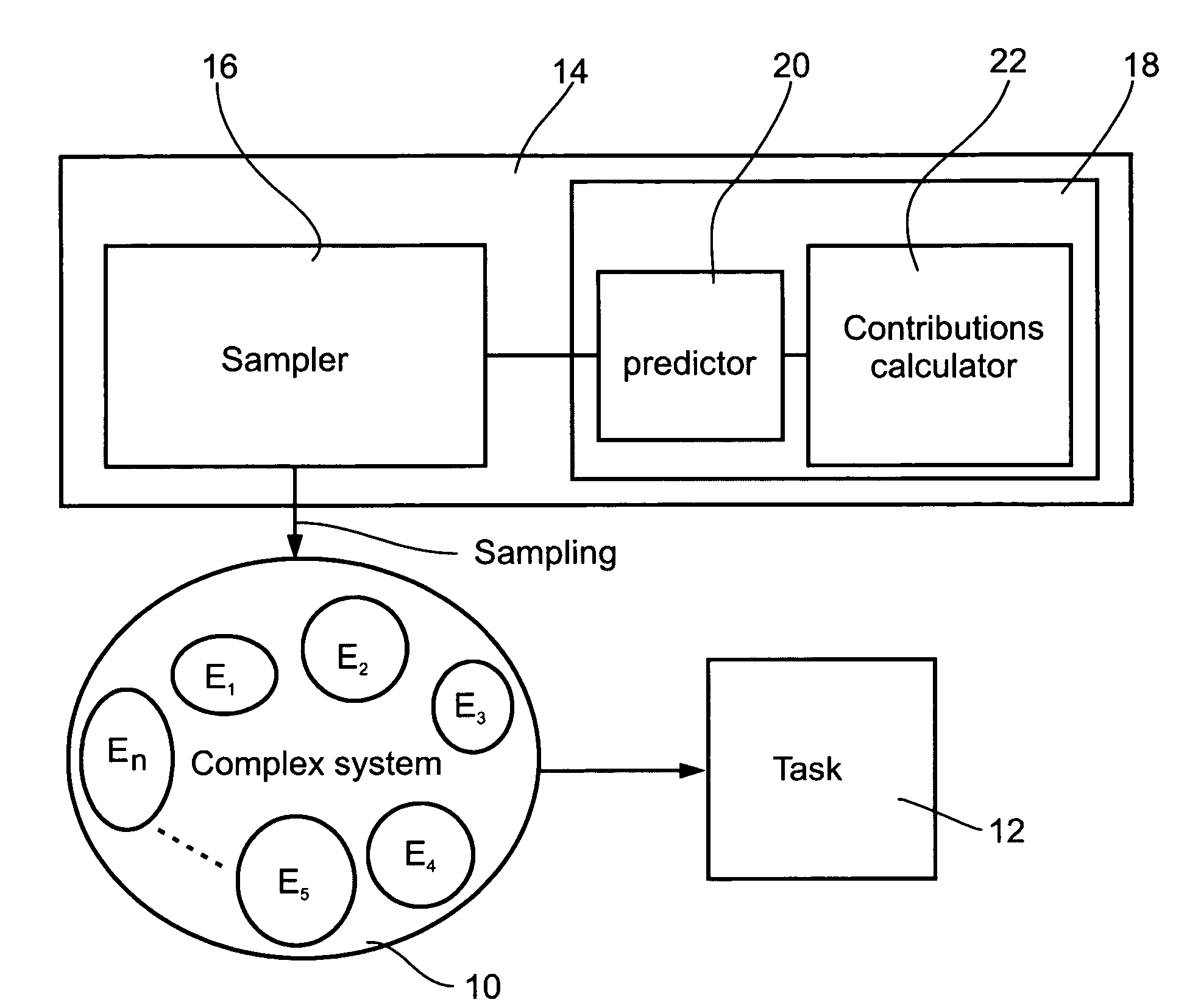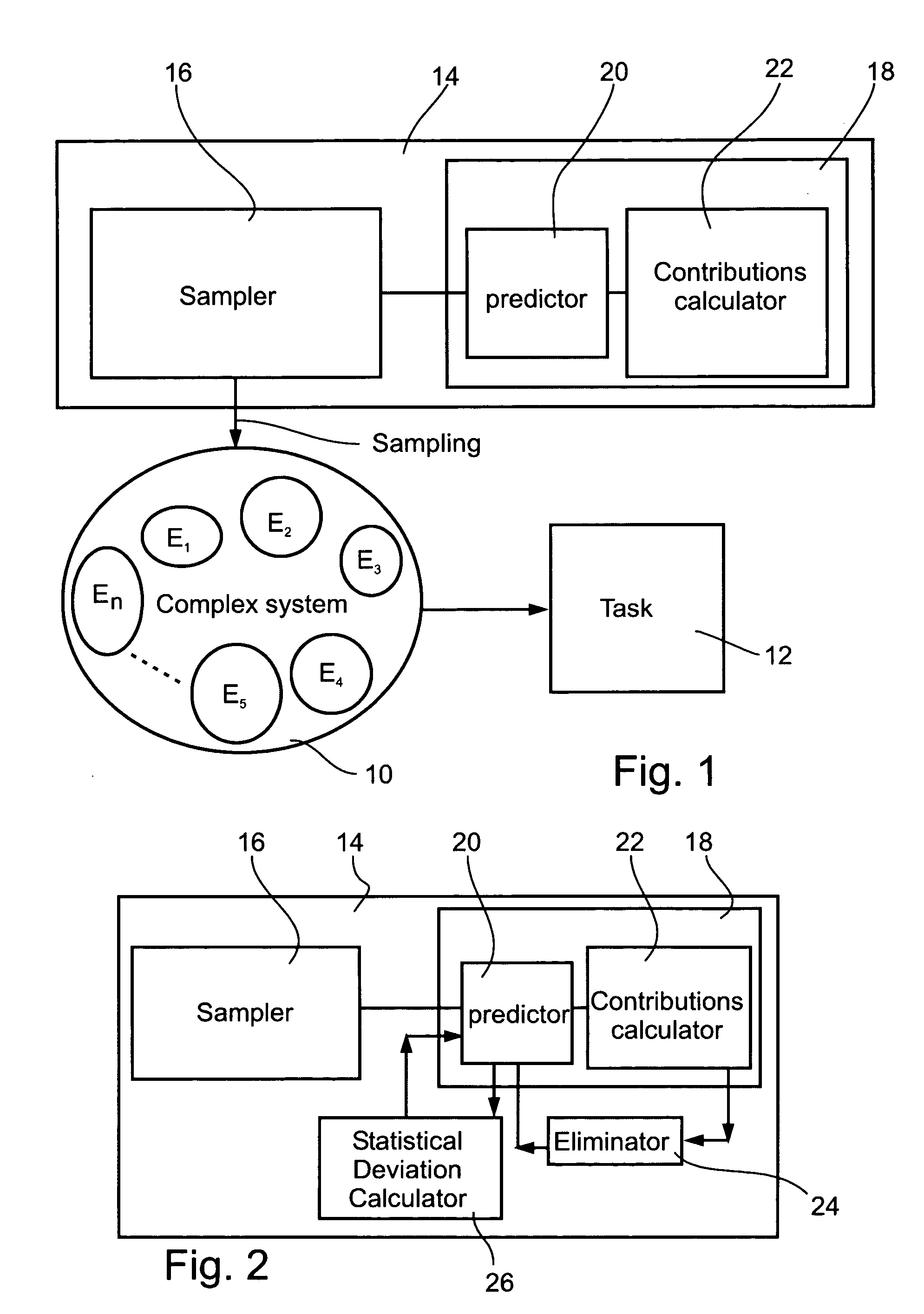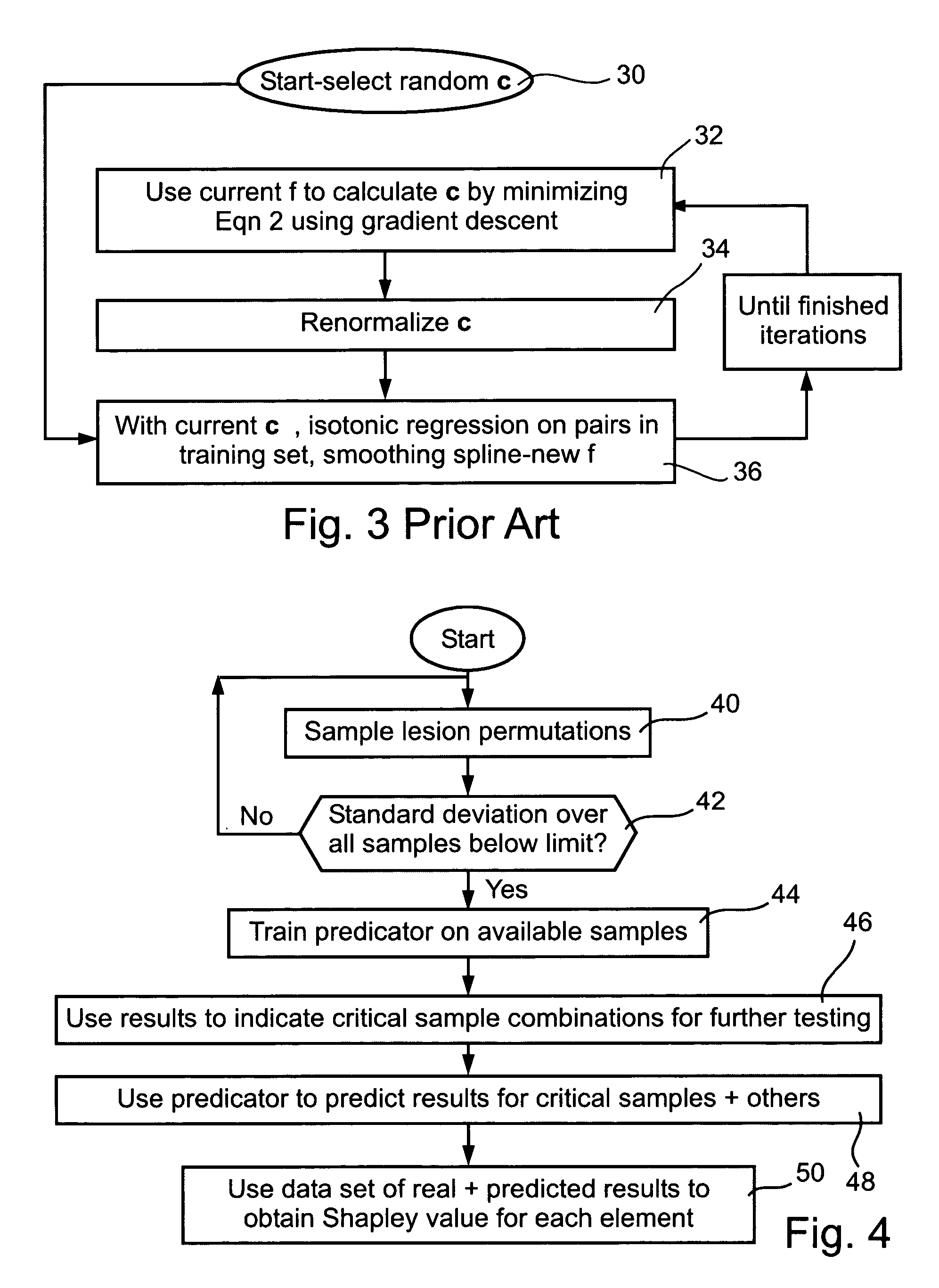Identification of effective elements in complex systems
a complex system and effective element technology, applied in the field of effective element identification in complex systems, can solve the problems of difficult to correctly identify the “core set", pose a very serious challenge, and the problem is very difficul
- Summary
- Abstract
- Description
- Claims
- Application Information
AI Technical Summary
Benefits of technology
Problems solved by technology
Method used
Image
Examples
example 2
COUNTER EXAMPLE 2
Prior Art FCA of the Test Case
[0147]In order to use the FCA for analyzing the test case, a concrete example must be considered, since no general formulas for the contributions exist, by contrast with the case of single lesion analysis and the MSA. We analyze the same concrete example of the test case introduced above. The FCA is trained 10 times using the full set of 24 perturbation configurations, with all runs reaching a zero mean squared error (MSE). As evident from FIG. 9, the FCA contributions and the Shapley value differ significantly for 3 out of the 4 elements, even when considering the large standard deviations of the former. The FCA contributions resemble the contributions assigned by the single lesion analysis, testifying that the FCA fails, too, in capturing a fair attribution of contributions in this case.
[0148]The present embodiments will now be illustrated through examples describing the application of MSA, FCA and Single Lesion Analysis to different ...
PUM
 Login to View More
Login to View More Abstract
Description
Claims
Application Information
 Login to View More
Login to View More - R&D
- Intellectual Property
- Life Sciences
- Materials
- Tech Scout
- Unparalleled Data Quality
- Higher Quality Content
- 60% Fewer Hallucinations
Browse by: Latest US Patents, China's latest patents, Technical Efficacy Thesaurus, Application Domain, Technology Topic, Popular Technical Reports.
© 2025 PatSnap. All rights reserved.Legal|Privacy policy|Modern Slavery Act Transparency Statement|Sitemap|About US| Contact US: help@patsnap.com



